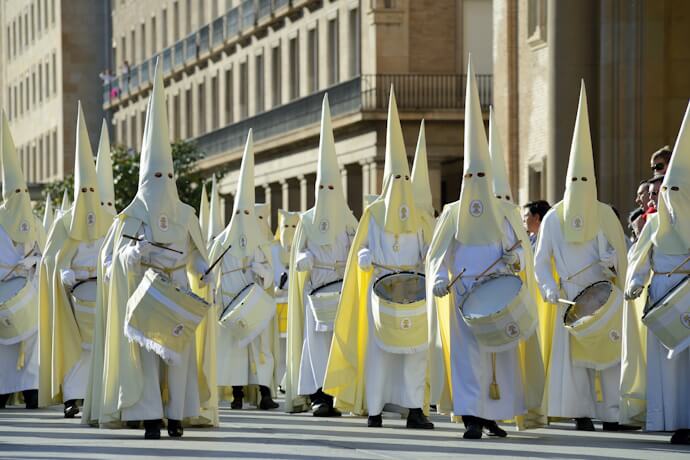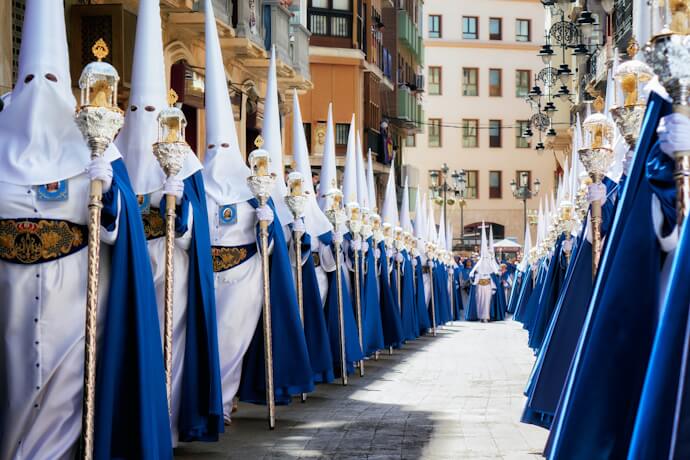You may have already heard about Holy Week, or Semana Santa in Spain, which is none other than one of the most significant and widely celebrated religious traditions in the country. It is truly fascinating to be able to visit Spain during this time. This week is a time of deep spiritual reflection and communal expression of faith and cultural significance, with each region adding its unique traditions to the overall observance of Semana Santa.
This being said, Holy Week also stands as one of the most bustling and highly coveted periods. Therefore, if you plan to visit during this time, brace yourself for the surge in crowds and secure your accommodations well in advance. It is essential to recognize that these moments are about immersing yourself in the city's atmosphere rather than visiting monuments, which may be hard to get into.
Without further ado, let us delve into this sacred period in Spain!
What is Holy Week and what does it consist of?
This unique Spanish festivity takes place during the week leading up to Easter Sunday and is felt with great fervour and passion throughout Spain. Each region has its unique way of commemorating Holy Week, but certain elements are commonly shared.
The hallmark of Semana Santa is the elaborate and solemn processions that feature floats, known as "pasos", which carry statues representing scenes from the Passion of Christ or the Virgin Mary. These sculptures are paraded through the streets with a sense of reverence and devotion, accompanied by the rhythmic sound of drums, trumpets and the chants of the participants.
Penitents also play a significant role in Semana Santa. Dressed in hooded robes, like the ones displayed above, these participate in the processions as an act of penance and devotion. The anonymity provided by the hoods is seen as a way for individuals to focus on their personal relationship with God.
Holy Week culminates on Easter Sunday, commemorating the resurrection of Jesus Christ. The day is marked by joyful celebrations, Masses and various cultural and community events.
Holy Week traditions across Spain
The traditions of Holy Week are firmly embedded in religious devotion and cultural legacy. You already know about the shared elements that exist throughout the country, so now we want to tell you about notable traditions that enrich the diversity of Semana Santa celebrations.
Málaga
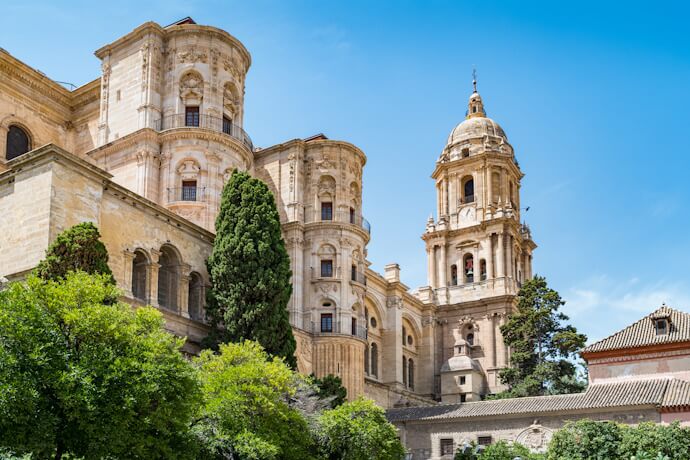
In Málaga, the processions wind through the narrow streets of the historic city centre, accompanied by the haunting sound of saetas (traditional Spanish songs) and the rhythmic beats of drums.
One of the distinctive features of Málaga's Semana Santa is the participation of the tronos, large platforms carrying religious images, which are often adorned with thousands of flowers. The atmosphere is charged with emotion as penitents, dressed in traditional hooded robes, accompany the floats through the streets. The culmination of the week is the grand procession on Good Friday, known as the "Procesión de los Gitanos", featuring the revered image of El Cristo de la Buena Muerte.
Seville
Andalusia is renowned for hosting the most elaborate and emotionally charged Semana Santa celebrations in Spain, especially Seville. The city's Holy Week traditions are characterized by grand processions, intricate pasos and the participation of numerous brotherhoods. The iconic "Semana Santa en Sevilla" features colossal floats depicting scenes from the Passion of Christ, carried through narrow streets by thousands of devoted penitents dressed in traditional robes and hoods. The processions, accompanied by stirring music and the fragrance of incense, create an intense and deeply spiritual atmosphere. Notable events include the "Madrugá", an overnight procession on Good Friday, and the "La Macarena" procession, which draws massive crowds.
Salamanca
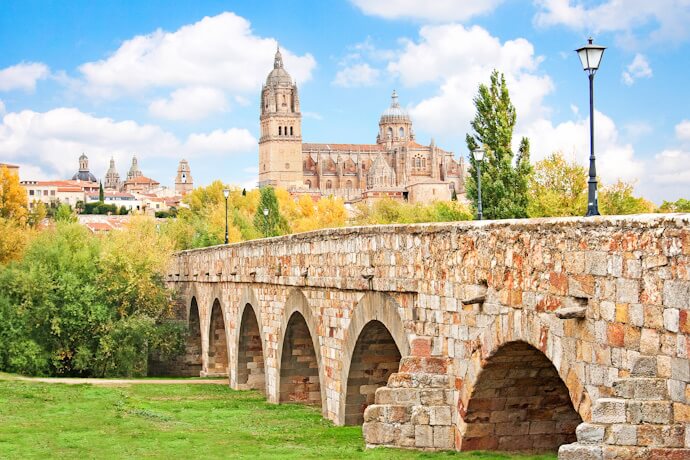
In Salamanca, Holy Week is marked by a unique blend of religious solemnity and academic elegance. The processions here are characterized by their sobriety and the participation of university students, who add a youthful energy to the events. The city's historic Plaza Mayor becomes a focal point for some of the processions, providing a stunning backdrop for religious fervour.
One of the notable processions is the "Procesión de la Oración del Huerto", which takes place on Holy Wednesday, featuring intricate pasos depicting scenes from the Garden of Gethsemane. The "Procesión del Silencio" (Procession of Silence) on Holy Thursday is known for its quiet and reflective atmosphere, with minimal music and solemn candlelit processions through the ancient streets of Salamanca.
Valladolid
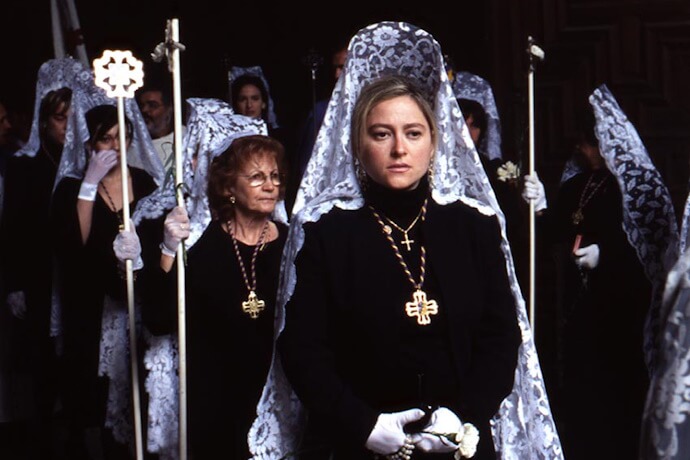
Valladolid's Holy Week is marked by a more introspective and reflective ambience. The city's processions are known for their solemnity and the participation of penitents who walk barefoot as an act of penance. The "Procesión del Entierro de Cristo" (Burial of the Christ) is a key event where a figure of Christ is carried through the streets in a funeral-like procession.
Valladolid's Holy Week is also distinguished by the unique "Cofradía de la Oración del Huerto", where participants wear green tunics, contributing to the visual richness of the processions.
Zamora
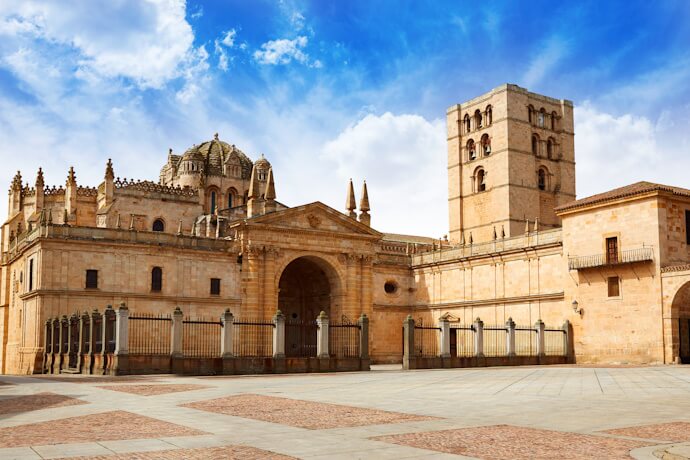
Zamora's Holy Week is famous for maintaining a profound silence during its processions, creating a powerful and contemplative atmosphere. The "Procesión de la Pasión" (Procession of Passion) is a highlight, and the traditional music, including the mournful sounds of the "tamboril", adds to the unique character of Zamora's Semana Santa. The city's commitment to maintaining silence during the processions enhances the spiritual impact of the traditions.
Toledo
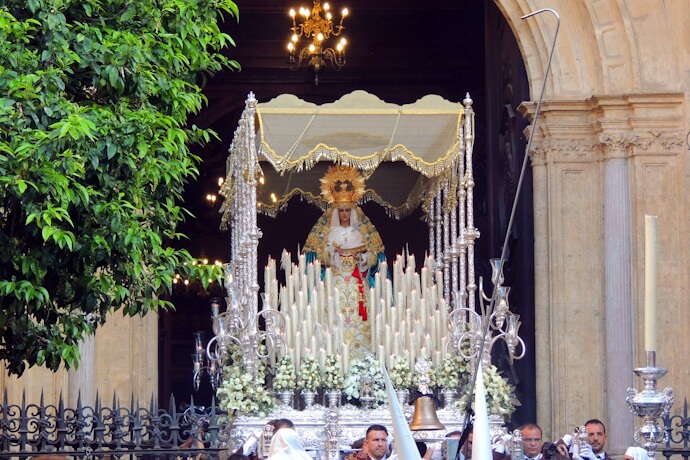
Toledo’s Holy Week is characterized by solemn processions that wind through its narrow, cobblestone streets, creating a dramatic backdrop against the medieval architecture. The processions pass through significant landmarks such as the Cathedral and the Alcázar.
The event is renowned for the "Procesión del Santo Entierro" (Procession of the Holy Burial) on Good Friday, which features powerful and emotive pasos depicting the burial of Christ. The participation of various brotherhoods and the haunting Gregorian chants add to the gravity of the occasion.
A Cultural Spectacle of Reflection and Community
Semana Santa is not just a religious event, it is a time of deep religious reflection, community participation and artistic expression that is deeply ingrained in Spain's cultural identity. Both locals and tourists come together to witness the spectacular processions and live firsthand the rich traditions that have been passed down through generations. The combination of religious rituals, processions, music and regional customs creates a rich tapestry of experiences during this significant week in the Catholic calendar


